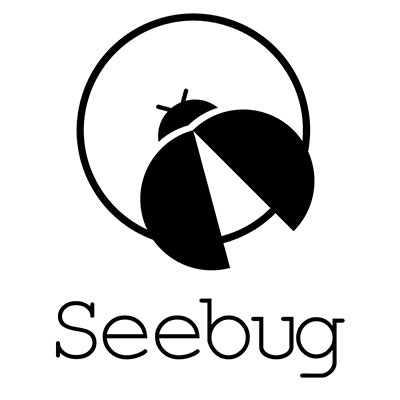# ICS Advisory (ICSA-19-344-05)
## Siemens XHQ Operations Intelligence
Original release date: December 10, 2019
[Print Document](javascript:window.print\(\);)
[Tweet](https://twitter.com/share?url=https%3A%2F%2Fus-
cert.cisa.gov%2Fics%2Fadvisories%2Ficsa-19-344-05)
[Like Me](https://www.facebook.com/sharer.php?u=https%3A%2F%2Fus-
cert.cisa.gov%2Fics%2Fadvisories%2Ficsa-19-344-05)
[Share](http://www.addthis.com/bookmark.php?url=https%3A%2F%2Fus-
cert.cisa.gov%2Fics%2Fadvisories%2Ficsa-19-344-05)
### Legal Notice
All information products included in [https://us-cert.gov/ics](/ics) are
provided "as is" for informational purposes only. The Department of Homeland
Security (DHS) does not provide any warranties of any kind regarding any
information contained within. DHS does not endorse any commercial product or
service, referenced in this product or otherwise. Further dissemination of
this product is governed by the Traffic Light Protocol (TLP) marking in the
header. For more information about TLP, see [https://www.us-
cert.gov/tlp/](/tlp/).
* * *
## 1\. EXECUTIVE SUMMARY
* **CVSS v3 8.8**
* **ATTENTION:** Exploitable remotely/low skill level to exploit
* **Vendor:** Siemens
* **Equipment:** XHQ Operations Intelligence
* **Vulnerabilities:** Cross-site Request Forgery, Improper Neutralization of Script-Related HTML Tags in a Web Page, Improper Input Validation
## 2\. RISK EVALUATION
Successful exploitation of these vulnerabilities could allow an attacker to
read or modify contents of the web application.
## 3\. TECHNICAL DETAILS
### 3.1 AFFECTED PRODUCTS
Siemens reports these vulnerabilities affects the following Operations
Intelligence products:
* XHQ: All versions prior to v6.0.0.2
### 3.2 VULNERABILITY OVERVIEW
#### 3.2.1 [CROSS-SITE REQUEST FORGERY
CWE-352](https://cwe.mitre.org/data/definitions/352.html)
The web interface could allow a cross-site request forgery (CSRF) attack if an
unsuspecting user is tricked into accessing a malicious link.
[CVE-2019-13930](http://web.nvd.nist.gov/view/vuln/detail?vulnId=CVE-2019-13930)
has been assigned to this vulnerability. A CVSS v3 base score of 8.1 has been
calculated; the CVSS vector string is
([AV:N/AC:L/PR:N/UI:R/S:U/C:H/I:H/A:N](https://www.first.org/cvss/calculator/3.0#CVSS:3.0/AV:N/AC:L/PR:N/UI:R/S:U/C:H/I:H/A:N)).
#### 3.2.2 [IMPROPER NEUTRALIZATION OF SCRIPT-RELATED HTML TAGS IN A WEB PAGE
CWE-80](https://cwe.mitre.org/data/definitions/80.html)
The web interface could allow for an attacker to craft the input in an
unexpected form, causing the application to behave in unexpected ways for
legitimate users.
[CVE-2019-13931](http://web.nvd.nist.gov/view/vuln/detail?vulnId=CVE-2019-13931)
has been assigned to this vulnerability. A CVSS v3 base score of 6.5 has been
calculated; the CVSS vector string is
([AV:N/AC:L/PR:H/UI:N/S:U/C:N/I:H/A:H](https://www.first.org/cvss/calculator/3.0#CVSS:3.0/AV:N/AC:L/PR:H/UI:N/S:U/C:N/I:H/A:H)).
#### 3.2.3 [IMPROPER INPUT VALIDATION
CWE-20](https://cwe.mitre.org/data/definitions/20.html)
The web application requests could be manipulated, causing the application to
behave in unexpected ways for legitimate users.
[CVE-2019-13932](http://web.nvd.nist.gov/view/vuln/detail?vulnId=CVE-2019-13932)
has been assigned to this vulnerability. A CVSS v3 base score of 8.8 has been
calculated; the CVSS vector string is
([AV:N/AC:L/PR:N/UI:R/S:U/C:H/I:H/A:H](https://www.first.org/cvss/calculator/3.0#CVSS:3.0/AV:N/AC:L/PR:N/UI:R/S:U/C:H/I:H/A:H)).
### 3.3 BACKGROUND
* **CRITICAL INFRASTRUCTURE SECTORS:** Energy
* **COUNTRIES/AREAS DEPLOYED:** Worldwide
* **COMPANY HEADQUARTERS LOCATION:** Germany
### 3.4 RESEARCHER
Siemens reported these vulnerabilities to CISA.
## 4\. MITIGATIONS
Siemens recommends users update XHQ Operations Intelligence product line to
v6.0.0.2 or later. To obtain the most recent version, please contact the
[local service organization](https://w3.siemens.com/aspa_app/).
Siemens has identified the following specific workarounds and mitigations
users can apply to reduce the risk:
* Follow the XHQ documentation to implement a secure IIS configuration.
* Allow only HTTPS communications to XHQ.
As a general security measure, Siemens strongly recommends users protect
network access to devices with appropriate mechanisms. In order to operate the
devices in a protected IT environment, Siemens recommends users configure the
environment according to [Siemens' operational guidelines for industrial
security](https://www.siemens.com/cert/operational-guidelines-industrial-
security), and follow the recommendations in the product manuals. Additional
information on Industrial Security by Siemens can be found at:
<https://www.siemens.com/industrialsecurity>
For more information on these vulnerabilities and more detailed mitigation
instructions, please see Siemens security advisory SSA-525454 at the following
location:
<http://www.siemens.com/cert/advisories>
CISA recommends users take defensive measures to minimize the risk of
exploitation of this vulnerability. Specifically, users should:
* Minimize network exposure for all control system devices and/or systems, and ensure that they are [not accessible from the Internet](https://www.us-cert.gov/ics/alerts/ICS-ALERT-10-301-01).
* Locate control system networks and remote devices behind firewalls, and isolate them from the business network.
* When remote access is required, use secure methods, such as Virtual Private Networks (VPNs), recognizing that VPNs may have vulnerabilities and should be updated to the most current version available. Also recognize that VPN is only as secure as the connected devices.
CISA reminds organizations to perform proper impact analysis and risk
assessment prior to deploying defensive measures.
CISA also provides a section for [control systems security recommended
practices](https://www.us-cert.gov/ics/recommended-practices) on the ICS
webpage on [us-cert.gov](https://www.us-cert.gov/ics). Several recommended
practices are available for reading and download, including [Improving
Industrial Control Systems Cybersecurity with Defense-in-Depth
Strategies](https://www.us-
cert.gov/sites/default/files/recommended_practices/NCCIC_ICS-
CERT_Defense_in_Depth_2016_S508C.pdf).
Additional mitigation guidance and recommended practices are publicly
available on the [ICS webpage on us-cert.gov](https://www.us-cert.gov/ics) in
the Technical Information Paper, [ICS-TIP-12-146-01B--Targeted Cyber Intrusion
Detection and Mitigation Strategies](https://www.us-cert.gov/ics/tips/ICS-
TIP-12-146-01B).
Organizations observing any suspected malicious activity should follow their
established internal procedures and report their findings to CISA for tracking
and correlation against other incidents.
CISA also recommends users take the following measures to protect themselves
from social engineering attacks:
* Do not click web links or open unsolicited attachments in email messages.
* Refer to [Recognizing and Avoiding Email Scams](https://www.us-cert.gov/sites/default/files/publications/emailscams_0905.pdf) for more information on avoiding email scams.
* Refer to [Avoiding Social Engineering and Phishing Attacks](https://www.us-cert.gov/ncas/tips/ST04-014) for more information on social engineering attacks
No known public exploits specifically target these vulnerabilities.


暂无评论